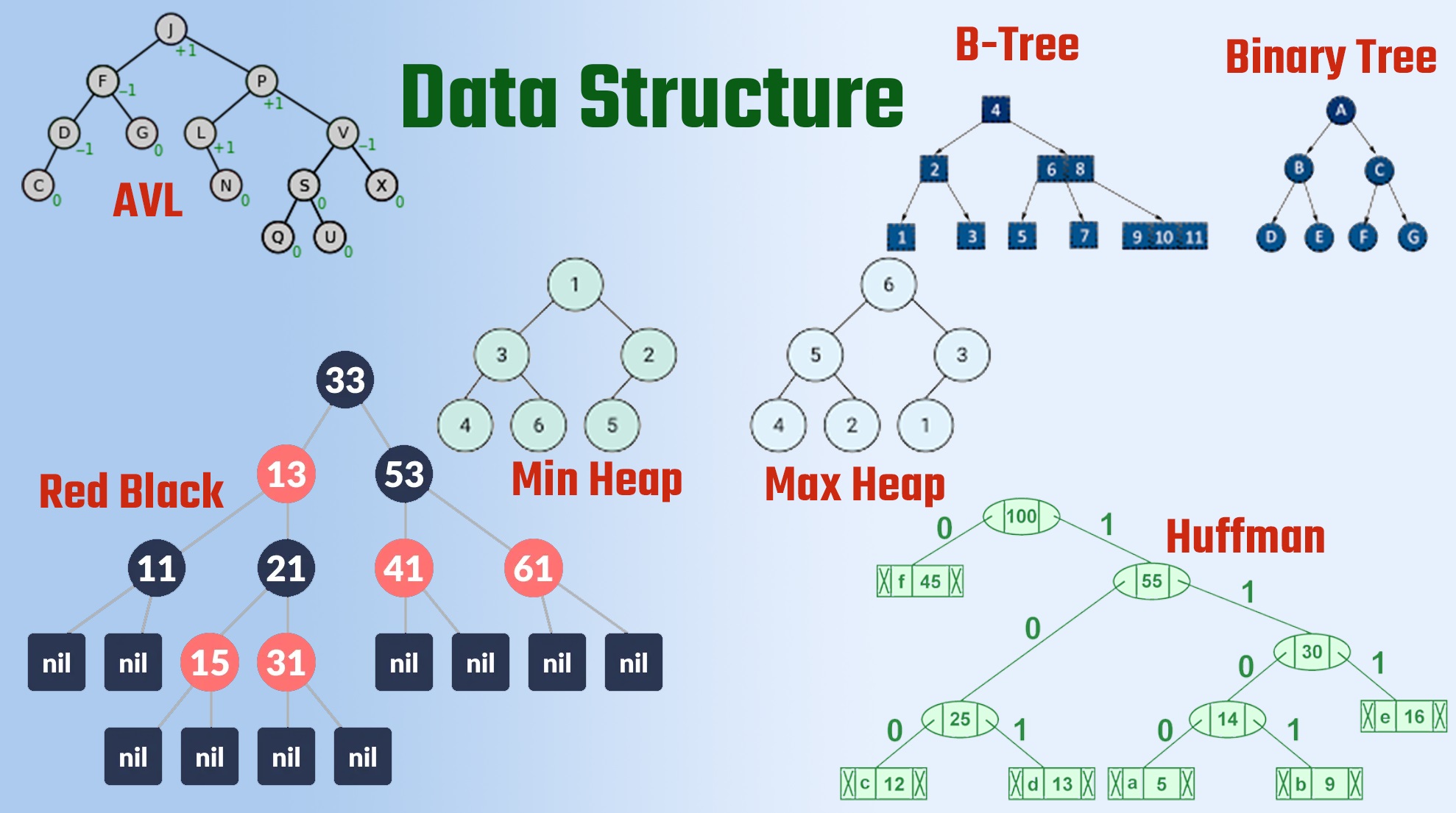Data Structures
data-structure
Embark on a captivating exploration of data structures and unlock the remarkable capabilities of Red-Black Trees, AVL Trees, Huffman Code Trees, Min Heaps, and B-Trees. These foundational structures are the keystones of computer science, offering elegant solutions to fundamental data organization and manipulation challenges.
You can see the project code along with the work report on GitHub.
The Red-Black Tree is a self-balancing binary search tree known for its efficiency and balance. Its striking red and black nodes maintain a harmonious structure, ensuring that the tree remains balanced, and operations like insertion and deletion are performed optimally. Discover the beauty of Red-Black Trees and their critical role in maintaining balanced data structures.
Red-Black Tree 🔴⚫️
AVL Tree 🌳
The AVL Tree, named after its inventors Adelson-Velsky and Landis, is another self-balancing binary search tree. Its remarkable self-balancing property guarantees that the tree remains height-balanced, leading to efficient searching and retrieval of data. Dive into the world of AVL Trees and understand how they maintain equilibrium in data structures.
Huffman Code Tree 📜
The Huffman Code Tree, an essential concept in data compression, allows us to represent data efficiently by assigning shorter codes to more frequent symbols. Explore the construction of Huffman Trees and witness their magic in encoding and decoding data, saving space while preserving information.
Min Heap ⬇️
Heap data structures are vital for efficient priority queue implementations. The Min Heap, in particular, ensures that the smallest element is always at the root. Learn about the mechanics of Min Heaps and how they enable quick access to the minimum element, making them invaluable in algorithms like Dijkstra’s and heapsort.
B-Tree 🌲
The B-Tree is a versatile data structure designed for handling large datasets efficiently. Its balanced structure and branching factor make it ideal for organizing data in databases and file systems. Uncover the power of B-Trees in managing and searching vast amounts of information.
Database Management System with B-Tree
This database management system (DBMS) is powered by the efficient B-Tree data structure. It ensures optimal data storage and retrieval while maintaining balance in the system.
B-Tree Integration
The B-Tree, a self-balancing tree structure, plays a crucial role in this DBMS. It enables efficient insertion, deletion, and search operations. The B-Tree ensures that data remains organized and accessible, making it ideal for managing large datasets.
Key Features
Insertion: Easily add new data to the database without compromising performance. Deletion: Remove data as needed, keeping the database balanced. Balancing: The B-Tree autonomously manages its structure for optimal efficiency.
Usage
This DBMS offers a straightforward interface to interact with data. Users can perform various operations such as insertion, deletion, and retrieval. The B-Tree ensures data integrity and fast access times, making it a reliable choice for managing complex datasets.
Explore the capabilities of this DBMS, experiment with different datasets, and witness the efficiency of the B-Tree in action.



